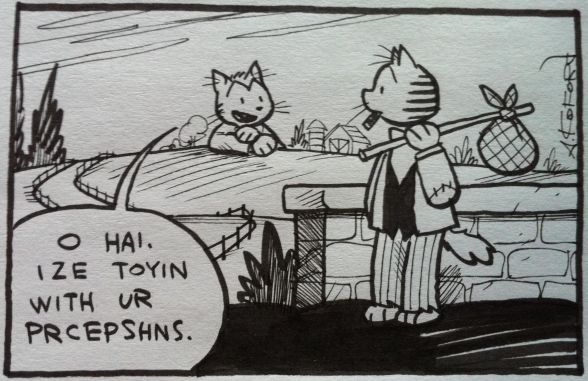Objectivity: a Designer’s Book of Curious Tools, Usborne
The nicely photographed items from Usborne’s collection were selected to be sculptural and artistically inspiring, but I found the book useful to identify odd things I had seen (often in thrift stores, since items are no longer in their original context and often no longer in any original packaging). There were also several items that I hope I get to see, like old-style ceramic inhalers that look like a the Yip Yips! Three stars.
How to talk to an autistic kid / by Daniel Stefanski (an autistic kid)
Written by a 14 year old with autism for his peers, this is a very useful quick guide to interacting with autistic people and a reminder that they are just as interested in friendship and socializing as anyone else. Three stars and recommended for classroom use.
High Society: the Central Role of Mind-Altering Drugs in History, Science and Culture, Mike Jay
A well-researched look at the categories mind-altering substances fill in human culture: medicine, therapeutic tool, social lubricant, symbolic gift, social ill, dangerous destroyer. He also does a great job looking at the worldwide economics of the substances, and the book is illustrated with some gorgeous and informative images from (mostly British) medical and historical collections. Pretty great. Three stars.
The Sky Sailors: True Stories of the Balloon Era, Bristow
It is certainly a history, but I very much enjoyed the aspect of it that was legends of daring scientist/explorer/showmen (and women). Some pretty juicy ones, and well-selected historical images. Bristow puts many of his best research sources on his web site. Four stars.
Skywalkers: Mohawk Ironworkers Build the City, Weitzman.
An enjoyable combination of the work history of a tribe (and one that highlights that they aren’t stuck in an unchanging romantic past or tragic present), engineering history of North America, and deep thoughts on the nature of tradition and work. I really liked it. Four stars.
Sidekicks, Jack D. Ferraiolo.
To start with, really well-characterized and well-laid-out plot, with great use of superhero tropes (our protagonist is a sidekick who has just begun to outgrow his boy-wonder costume and begun to ask the sort of questions that begin to show the cracks in the facade of the ultra-upright superhero he works with). I wasn’t able to predict every plot turn, a very good sign, and the stakes were high. There were some plot developments that I don’t feel were completely earned, something I think about more after hearing some really good writers talk about what they do. Overall, four stars.
The Panic Virus: A True Story of Medicine, Science, and Fear, Seth Mnookin (audiobook)
It’s the story of the recent vaccine (or vaccine preservative, depending who you ask and when) and autism scare, but it’s almost too simple to call it that, as Mnookin does an amazing job of telling the twin stories of vaccines and the fear of vaccines, especially regarding children. His story is primarily US-based, taking in the peculiar US institution of the vaccine injury court as a response to the peculiar US institution of tort law, even though much of the drama of the MMR vaccine scare begins in the UK. I had felt informed about the issue, but I learned a lot from the book; it was also very successful as an audiobook, with the stories leading through the argument effectively. Four stars.
All Aboard: The Complete North American Train Travel Guide, Jim Loomis
Sometimes I get to use my library skills to my own evil ends, in this case an up-to-date and helpful guide to riding the rails in style for my trip later in the year. Yesss! Got a lot of good tips, and I’ll probably take it out of the library again before I go. Four stars.
Astronaut Academy. Zero Gravity, Dave Roman
A really fun manga-influenced graphic novel with high tween appeal (and reminded me of my mom’s favorite Japanese TV dramas). I’m looking forward to sharing this one! Three stars.
